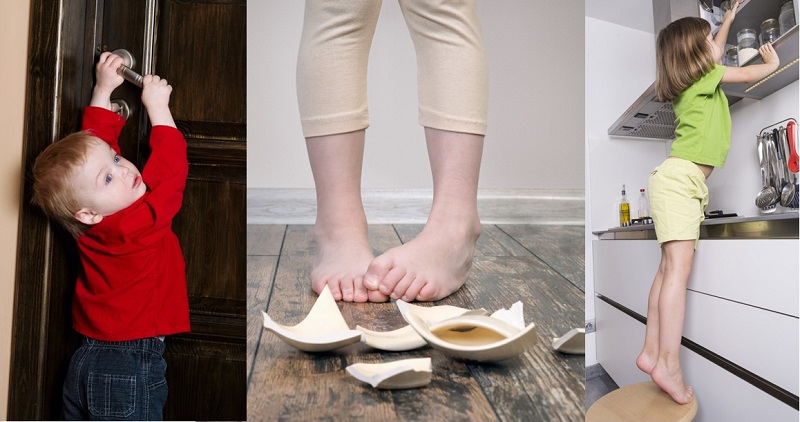Jean Piaget is a name known to all psychology graduates. His theory on the moral development of children is covered in nearly every fundamental psychology course.
One often-cited finding from Piaget's work is that very young children are more likely to use information about outcomes than information about intentions, when judging 'right and wrong'. The famous example goes something like this:
- A child is called to dinner and when they open the door to the dining room it knocks into a tray of 15 cups, breaking them all. The child could not have known that the tray was behind the door.
- Another child tries to steal some jam from a cupboard while their parent is not looking. They try to reach the jam by standing on a chair, and in doing so they knock a single cup off the shelf, breaking it.
The question put to children of various ages in this experiment is usually a variation of "Which of these children is the naughtiest?" The original finding was that very young children say the first is naughtiest (basing their view on the greater number of cups broken) while older children (from about age seven to nine) tend to vote for the second case, that resulted in only one broken cup but through the intentional and blameworthy act of trying to steal the jam.
My own take on this, as someone who is interested in finding ways to stop people dying on the roads – and therefore in this analogy, finding ways to save cups from being broken – is that the question "Which of these children is the naughtiest?" misses the point. The more pertinent question is "What is going on here that can be improved?" When I ask this question, I conclude that the real issue - in both cases - is the wider system that has allowed cups to be broken.
A Safe System approach to cup safety in this analogy would look like this:
- The system of storing cups could be improved, such that they are not stored in locations from which they can fall or be impacted by opening doors. Let's call this 'safe locations'.
- The cups themselves could be made more resilient to impact. Let's call this 'safe cups'.
- The pace at which children in the environment run around could be limited to lessen impact forces for those collisions with cups that do occur. Let's call this 'safe speeds'.
- The children in the environment could be informed of risks like cups on trays behind doors, and the dangerous consequences of stealing jam. Let's call this 'safe children'.
- We could learn from the incidents that do occur, and also have in place a cup repair function so that those cups broken might be repaired where possible. Let's call this 'post-breakage care'.
This system would also start from the premise that it is simply not acceptable for cups to be broken and would assume that the children involved are likely to sometimes forget how to behave. For example, there will always be some child who wants jam, despite the difficulties of reaching it. To err is human, after all.
Crucially, at no point would an overseeing adult wade in and state that "We are 100% focused on keeping cups from breaking, but if children insist on misbehaving and not following the rules, then we cannot be expected to account for that." Instead, everyone involved would relentlessly pursue a reduction, ultimately to zero, in the number of broken cups. They would accept that this may take time to achieve (advances in storage engineering, cup technology, behaviour change science and repair approaches are all needed). However, the priority would be in making progress towards the end goal.
I accept that the analogy is not perfect (people are not cups, cup repair is not the same as post-road-collision care, and so-on). However in the shift of reasoning we see at about age seven to nine in Piaget's original experiments, we see a carbon copy of what the authors of this paper note in the reasoning of many road authorities around the world. "Road users are fallible, and this is why we adopt the safe system" they say, before adding "…however if people don't follow the rules, then we cannot help them." Understanding non-compliance with rules and finding better ways to enforce them and improve compliance is important; however, to give up on the non-compliant as deserving of protection does not reflect a Safe System philosophy.
I also accept that the position any one person adopts on this will tend to be nuanced. It is also certainly up for debate; I am not necessarily saying something 'right' or 'wrong' here. I've just decided that my own approach – the one I am comfortable in taking in road safety – is to think more like a toddler, and less like a nine-year-old. There are reasons for wanting people to behave differently, and for noting and dealing with incorrect behaviour when it is observed. However, being interested primarily in the number of things broken leads me to believe that a system focus is the most important thing. For me, cups (and casualties) matter more than intentions and blame.
Another point is worth making. Almost 40 years ago the landmark publication Injury in America - written by a specially-convened committee of experts - noted that a comprehensive injury reduction system has broadly three approaches available. People can be persuaded to change the behaviour that leads to injury (for example through safety campaigns), can be required to change their behaviour (for example through laws), or safety can be built into the system (for example through fitting safety technology that automatically prevents the behaviour - Intelligent Speed Assistance is a good example in road safety). The authors also note that while a comprehensive system will use all three approaches, a hierarchy of effectiveness is generally observed, with automatic protection typically more effective than requiring behaviour change, which in turn is more effective than persuasion. If we accept this (it certainly aligns with my observation of the evidence across a range of road safety interventions) then we can conclude that by focusing on outcomes rather than intentions we open up not only more options for intervening, but more effective ones too.
It is doubtful that toddlers understand this last point explicitly. Their reasoning and focus on outcomes are presumably based on a less developed understanding of the complexities of human intention, and the fact that the number of cups broken is the obvious and simple indicator of 'naughtiness' in Piaget’s experiment. How interesting though that the Safe System approach, for all its complexity, might benefit from a toddler mindset, for all its simplicity.
Grown-ups – especially those in road authorities – please take note.


